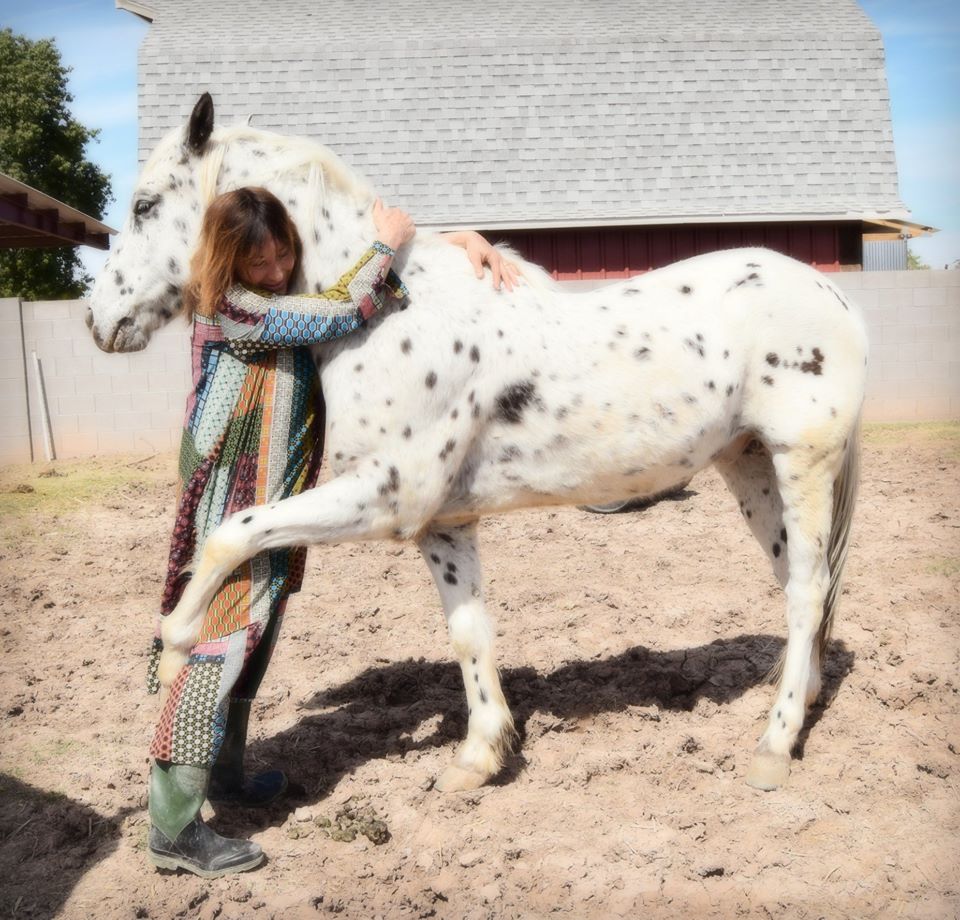Aimee’s Farm Animal Sanctuary in Gilbert, Arizona is home to 100+ animals (horses, donkeys, cows, alpaca, goats, pigs, sheep, rabbits, ducks, chickens, turkeys, dogs, and cats), many of which have or have had special needs.
There’s Adorabull, the calf who, last summer, was found abandoned in a ditch, umbilical cord still attached. When he came to the farm, he was so weak and sick he couldn’t even be bottle fed. He had to be tube fed. I laid with him for hours one Saturday morning, dotting on him like his mother would.
Now, he’s a strong happy cow, who’s able to frolic with the other cows in the pasture. I call him “Addy.â€

One of the more recent additions to the farm is a lamb named Grace. Born with a crooked neck, she came to the farm sanctuary all the way from Texas. With cold laser therapy and massage, her head becoming more in alignment with her body. She doesn’t let her disability prevent her from running zoomies around the farm. She’s so cute!

This farm is also a healing place for the community – people with various physical and emotional disabilities. Aimee regularly posts on the farm’s Facebook page about the how the farm helps its various visitors. She also offers tours and cow hugging sessions.
Aimee’s Farm Animal Sanctuary is a healing place for me. My depression and anxiety are always better after spending a few hours at the farm. It’s always calming to visit the farm – whether I’m shoveling manure or singing to animal cuddled in my arms. I happily show up with my boots and gloves asking, “What do you need me to do?â€
I love this place. I love it so much that one of my requirements for my future dream house is that the property has to be closer to the farm than where I live now so I can visit more often.
I want to help save this farm. Aimee’s landlord recently informed her that he sold the land to a developer. Aimee and the 100+ animals need a new home.
Thanks to generous contributions and fundraising efforts, Aimee has raised close to $100,000. She’s researching possible properties every day. The more money she can put down for a down payment, the more options available for the farm’s new home.

Here’s how you can help Aimee’s Farm Animal Sanctuary:
Direct Donation
You can make a donation directly to the farm through their website or PayPal. You can also send money using Venmo (@Aimeesfarm).
The farm sanctuary is 501(c)(3) charity so all donations are tax-deductible.
Smile.Amazon.com
You’re already shopping on Amazon. When you shop through Smile, you can designate a charity to benefit from purchases that are Smile eligible. You can designate Aimee’s Farm Animal Sanctuary as your charity here.
If your workplace purchase supplies on Amazon, please ask them to use Smile and support Aimee’s Farm as well.
The Farm’s Amazon Wishlist
The farm always needs supplies. Please check out their Amazon Wish List if you want to purchase one of the many things the animals need.
The farm regular puts out requests for towels and blankets. If you’re cleaning out your linen closet, please see if the farm sanctuary could use them.
Special for Law Firms: CLEs for Charity
I want to do whatever I can to help save the farm. I’m offering an hour of continuing legal education in exchange for any law firm donating $500 to the farm. Yes, some of the CLEs I’m prepared to do fulfill our ethics requirement. If I’m in your city, I can do a CLE in person; otherwise, I’ll present it over Skype or Zoom.
Please follow Aimee’s Farm Animal Sanctuary on Facebook for more opportunities to help and updates about what’s happening at the farm.



